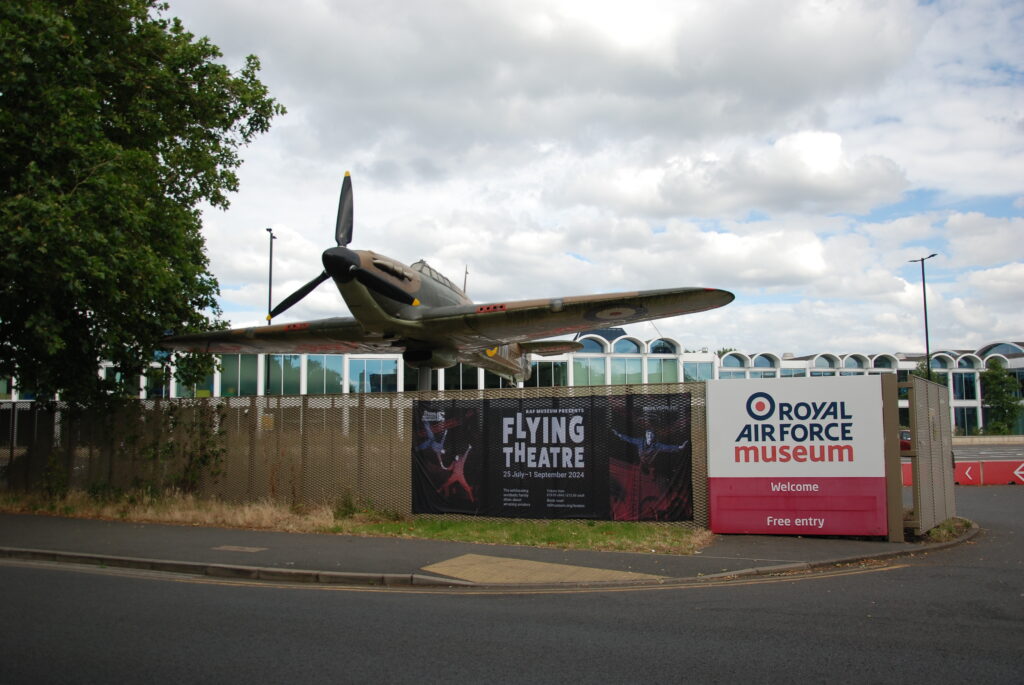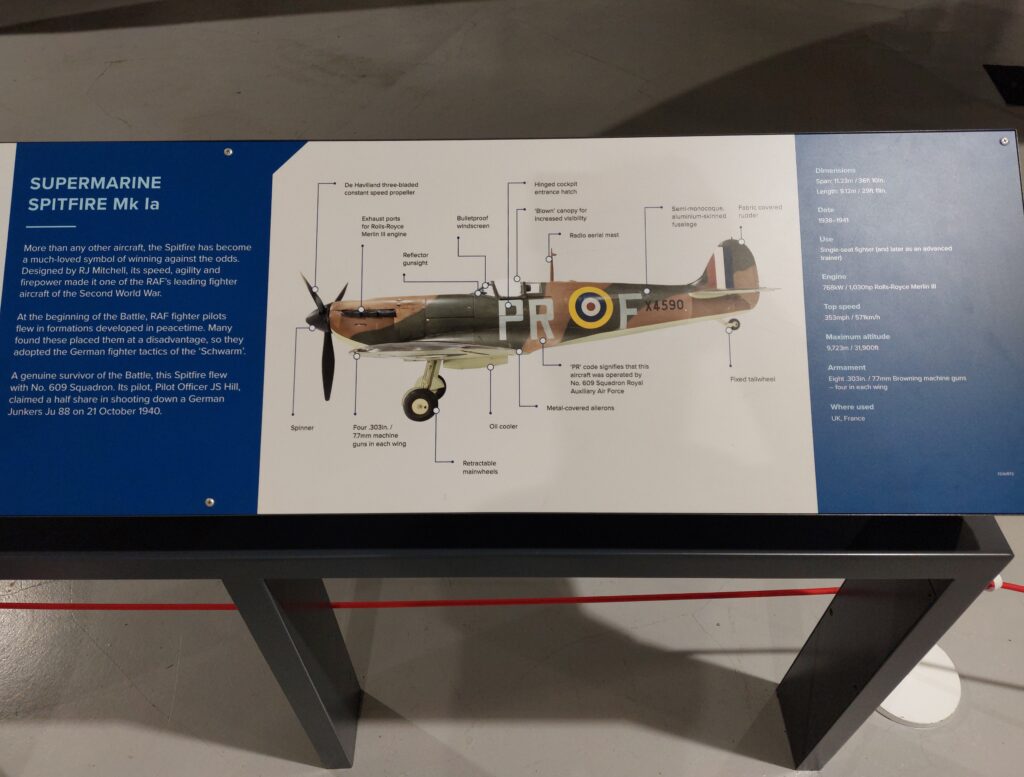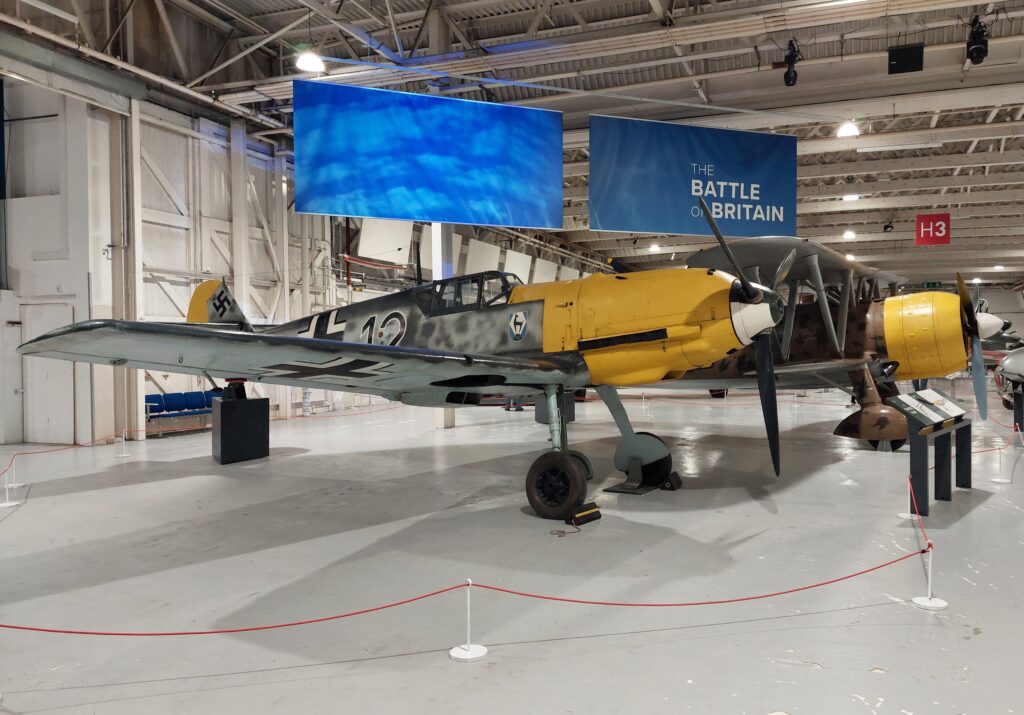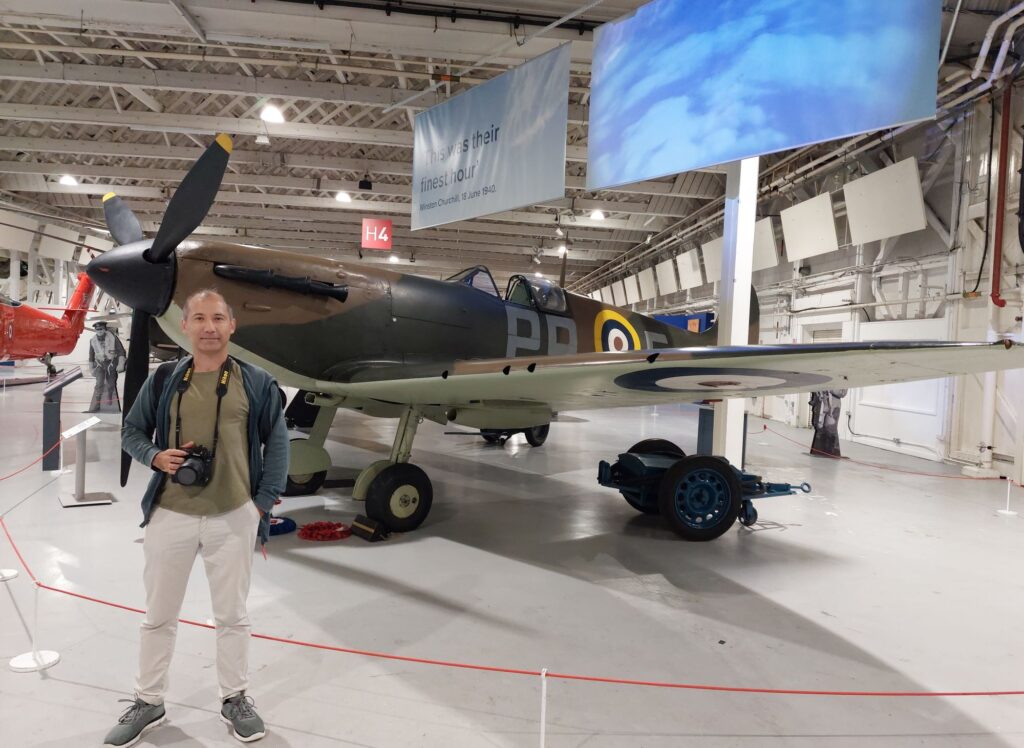In Pursuit of an Aviation Icon (Mustafa Barış Harmankaya, Turkey, ITP 2024)
Written by Mustafa Barış Harmankaya, Archaeologist, Istanbul Archaeological Museums (Turkey, ITP 2024)
Today I made the decision to spend time at a museum that I had been wanting to see for a long time. When I was a little kid, I watched a six-episode British TV series called Piece of Cake (1988). The production was adapted from the same-titled novel and narrates the tale of a fictional British fighter squadron during World War II. Thanks to the series, I learned about the Battle of Britain, which took place in the skies of southern Britain from July to October 1940 during World War II. The result was a victory for Great Britain against the continuous and devastating air attacks of the German Air Force.
Through the series, I was introduced to the Spitfire fighter plane. So, I took the bus early in the morning to the Royal Air Force Museum, located on the former Hendon airfield in north London, to see the aircraft of the Battle of Britain, especially the Spitfire, which I have read a lot and watched so far.

The museum, opened in 1972, houses over a hundred aircraft in six hangars. In the museum, I came across the Spitfire Mk IA I was looking for in hangar number 3. Designed by R. J. Mitchell, chief designer of Supermarine Aviation Works, as a short-range, high-performance, metal fuselage fighter aircraft, the Spitfire made its first flight in 1935 and entered service in the Royal Air Force in 1938.

The Spitfire, which entered service in the Turkish Air Force from the 1940s and was also used by other allied countries, was produced in twenty-four versions and many sub-versions until 1948 and was used until the 1960s. During World War II, the Spitfire took part on the battlefields of Western Europe, the Mediterranean and North Africa, Eastern Europe, the Far East, and the Pacific. In the museum, the Spitfire is exhibited alongside the Hawker Hurricane Mk Ia, another iconic aircraft of the Battle of Britain.
The Hawker Hurricane, which shot down more enemy aircraft than the Spitfire during the Battle of Britain, was the workhorse of the battle due to its numerical majority in the Royal Air Force. The German Air Force’s primary fighter, the Messerschmitt Me-109, and an Italian Fiat CR 42 biplane are positioned on the other side of this duo. These single-seat fighter planes that made it through the Battle of Britain are known as the ‘Fighter Four’ in the museum.

I joined the afternoon tour at the museum, and I gained new information about the Battle of Britain that I had never heard before. I visited this museum until closing time, which is a must for visitors of all ages who are interested in aviation and RAF history. It has always been fascinating for me to come together with objects from a time before me, thanks to the function of museums to preserve objects and pass them on to future generations.

While I was going back to Schafer House in the evening with the happiness of having crossed a few more items off my bucket list, I was thinking about what I saw in the museum. Once more, I remembered Winston Churchill’s words about the young pilots who fought selflessly in the cockpits of Spitfires and Hurricanes during the Battle of Britain 84 years ago. “Never in the field of human conflict was so much owed by so many to so few.”
Tomorrow’s blog on the first day of a new week in the programme will come from Department Chair and Assistant Professor Mattie Reynolds of the Museum Studies Institute of American Indian Arts.
